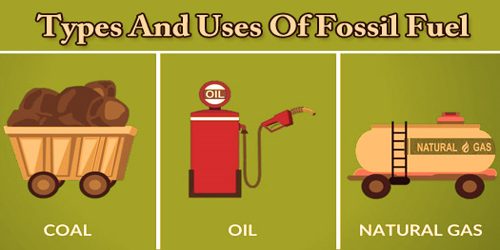Fossil fuel is a fuel formed by natural processes and any of a class of hydrocarbon-containing materials of biological origin occurring within Earth’s crust that can be used as a source of energy. Decomposing plants and other organisms, buried beneath layers of sediment and rock, have taken millennia to become the carbon-rich deposits we now call fossil fuels. These non-renewable fuels, which include coal, oil, and natural gas, supply about 80 percent of the world’s energy. They provide electricity, heat, and transportation, while also feeding the processes that make a huge range of products, from steel to plastics.
Fossil fuels include coal, petroleum, natural gas, oil shales, bitumens, tar sands, and heavy oils. All contain carbon and were formed as a result of geologic processes acting on the remains of organic matter produced by photosynthesis, a process that began in the Archean Eon (4.0 billion to 2.5 billion years ago). Most carbonaceous material occurring before the Devonian Period (419.2 million to 358.9 million years ago) was derived from algae and bacteria, whereas most carbonaceous material occurring during and after that interval was derived from plants.
When fossil fuels are burned, they release carbon dioxide and other greenhouse gases, which in turn trap heat in our atmosphere, making them the primary contributors to global warming and climate change. Most air pollution deaths are due to fossil fuels, and fossil fuel phase-out would save 3.6 million lives each year.
Types and Uses of fossil fuels –
There are several main groups of fossil fuels, including:
Coal –
It is a hard, black colored substance made up of carbon, hydrogen, nitrogen, oxygen, and sulphur.
The major types of coal are- anthracite, bituminous and lignite.
Anthracite has a higher carbon concentration and is the hardest type of coal.
Lignite has a high concentration of oxygen and hydrogen but a low concentration of carbon.
Bituminous is a moderate form of coal.
Coal is processed industrially to obtain derivatives like coke, coal tar, and coal gas.
Formation of Coal –
The process of formation of coal is known as carbonization.
The dense forest present in the low-lying wetland got buried in the earth millions of years ago.
Soil kept depositing over them and they got compressed.
As they went deeper and deeper, they faced high temperature and pressure.
As a result, the substances slowly got converted into coal.
Uses of Coal –
Coal was used to produce steam in the railway engines initially.
It is used to cook food.
It is used to generate electricity in thermal plants.
It is used in industries as fuel.
Petroleum –
It is a clear, oily liquid, usually green or black in colour.
It has a very strange smell and is a mixture of petroleum gas, diesel, paraffin wax, petrol, lubricating oil, etc.
It is also termed as “Black Gold” because of its wide range of uses in many industries.
Formation of Petroleum –
The sea animals and plants died and their bodies settled at the bottom of the sea.
They got compressed by the layers of sand and clay.
Their encounter with high temperature and pressure converts them into petroleum.
The petroleum is separated from the crude oil by a series of processes in a refinery. This is known as petroleum refining.
Uses of Petroleum –
It is used to power internal combustion engines in the form of petrol.
It is used in roofing, road pavements, and as a water repellent.
It is used in manufacturing detergents, plastics, fibres, polyethene, etc.
Natural gas –
It is a clean and non-toxic fossil fuel.
It is colourless and odourless and can be easily transferred through pipelines.
It is stored as compressed natural gas (CNG) under high pressure.
It is less polluting and less expensive fossil fuel.
Methane is the most important natural gas.
Formation of Natural Gas –
The phytoplankton and zooplankton sink to the bottom of the ocean and mix with organic materials to form an organic-rich mud.
The mud buried under more sediments and lithifies to form an organic shale. This prevents its exposure to oxygen. This is done to protect the organic materials from being decomposed by bacteria.
The increasing pressure and temperature transform the shale into a waxy material known as the kerogen.
At temperatures between 90-160°C kerogen is transformed into natural gas.
Uses of Natural gas –
Compressed Natural Gas is used for generating power.
It is used as fuels in automobiles.
It can be used at homes for cooking.
It is used as a starting material in chemicals and fertilizers.
However, many sources of carbon emissions, such as existing power plants that run on natural gas and coal, are already locked in. Considering the world’s continuing dependence on fossil fuels, many argue that in addition to efforts aimed at replacing them, we also need to suck carbon from the air with technologies such as carbon capture, in which emissions are diverted to underground storage or recycled before they reach the atmosphere. A handful of commercial-scale projects around the world already capture carbon dioxide from the smokestacks of fossil fuel-fired plants, and while its high costs have prevented wider adoption, advocates hope advances in the technology will eventually make it more affordable.
Information Sources:
















